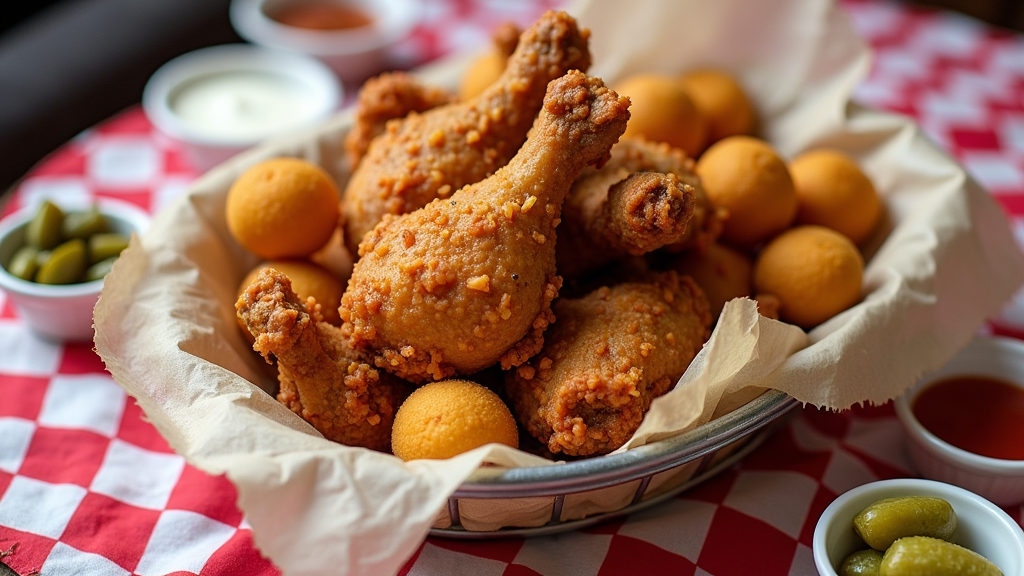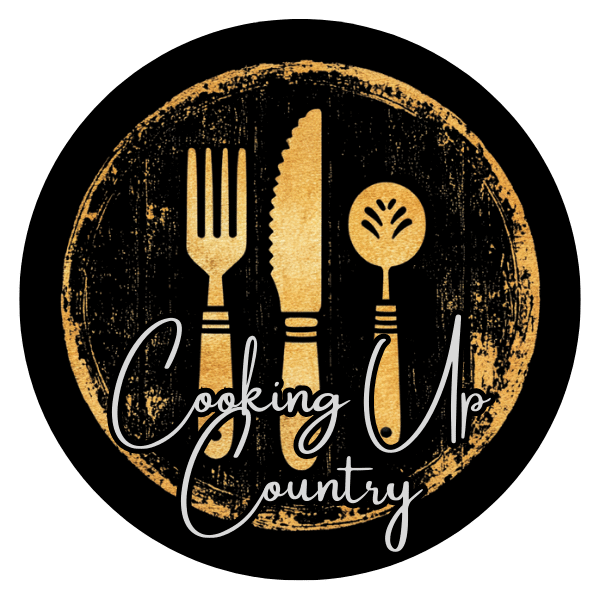Tracing the origins of Southern fried foods feels a bit like unraveling a family story passed down across generations. There’s a little bit of everyone’s influence in every bite. If you’ve ever sunk your teeth into crispy fried chicken, golden hush puppies, or even a slice of fried green tomato, you’ve tasted a patchwork of history shaped by culture, migration, and resources. I want to walk you through where these famous dishes really came from, why they thrive in the South, and what makes them so darn special.

The Deep Roots of Southern Fried Food
Fried foods in the American South have a history that stretches long before fast-food chains or backyard cookouts. The story actually starts much farther back, across continents and centuries. What we usually think of as classic Southern fare, like fried chicken and catfish, is the result of many different food traditions coming together, especially during the colonial period.
European settlers, especially the Scottish, brought over techniques for deep frying meats. Instead of boiling or baking, they used animal fats to fry food, which was simpler and had more flavor. At the same time, enslaved Africans brought a huge influence, not only with their cooking expertise but also with their spices, seasonings, and plant-based frying knowledge. Indigenous peoples of the region also pitched in by sharing local ingredients like cornmeal, the base for cornbread and fried batter (think hush puppies or fried fish).
Where Southern Food Culture Came From
Southern cuisine grew as a blend of these overlapping cultures. In the 1700s and 1800s, food was shaped by what was available; corn, pork, chicken, and seasonal veggies. Frying became a go-to cooking method because it could transform simple or tough ingredients into tasty comfort food. It also didn’t need a fancy oven or extra resources, just a pot and some hot oil. This was especially handy for farmers and families living out of town in rural areas.
This multicultural history shows up all over a Southern plate. African influences are behind popular dishes like fried okra and fish, while the Scottish contributed their frying know-how. West African traditions prized okra, blackeyed peas, and rice—foods which became staples down South. These culinary traditions didn’t just add variety; they formed the backbone of the regional food culture that flourished for generations.
Immigrants from other parts of Europe also brought their own customs, mixing in some variety with everything from spices to breading techniques. Over time, these influences combined, laying the foundation for a food culture that continues to charm locals and visitors alike today.
Why Fried Food Became So Widespread in the South
There’s a reason fried food feels so deeply Southern. For starters, it fit the climate and way of life. Hot frying was a practical way to cook quickly and safely before refrigeration. Fried foods kept well and worked as portable meals for laborers working in fields or folks journeying long distances.
The South’s agricultural landscape had everything you’d need for golden fried goodness: corn for meal, pigs for lard, and chickens for, well, chicken. People could prepare hearty, flavorful meals with a dash of fat, seasonal produce, and whatever protein they had on hand—which was often cheaper cuts of meat. Over time, frying became closely linked with Southern hospitality. Gathering for a Sunday picnic or after-church lunch meant big platters of fried chicken or fried fish served up with friends and family.
Frying is also practical in terms of stretching meals. You could take a whole chicken, cut it into pieces, coat it in flour or cornmeal, and feed a crowd. It’s a method born from the need to make the most out of what was available to you. This approach still matters today, as sharing food brings people together at community events and family gatherings.
Classic Southern Fried Dishes and Their Stories
The menu of Southern fried favorites goes way beyond just chicken, though fried chicken really steals the show. Here’s an overview of some dishes with roots worth knowing about:
- Fried Chicken: This crowd-pleaser gets its signature flavor from buttermilk marinades, seasoned flour, and sizzling oil. The method—deep frying in a cast iron skillet—comes from a blend of Scottish and African cooking, with Southern cooks giving it their own spin over the years.
- Catfish: With plenty of streams and rivers nearby, Southerners made catfish a favorite. Dipped in cornmeal and fried to perfection, catfish is served piping hot with sides like coleslaw or hush puppies.
- Hush Puppies: These cornmeal fritters, typically paired with fried fish, come with a story. Some claim cooks tossed bits of dough to quiet barking dogs, thus the name “hush puppies.” The batter blends cornmeal, onions, and buttermilk—paying tribute to African and Native American creativity.
- Fried Green Tomatoes: Picked before ripening, green tomatoes are ideal for frying, especially with cornmeal coatings. This dish is a salute to farmhouse kitchens where nothing on the vine went to waste.
- Okra: This vegetable gets cut and fried for a perfectly crisp snack or side. Okra emigrated from Africa but found an enthusiastic audience on Southern tables, especially in Louisiana and Mississippi.
Each dish reveals a story about ingenuity and local flavor, and every region or even family may have its own twist, whether in the selection of spices or the frying technique. Sometimes, these tweaks become secret family traditions, passed down to the next generation.
Everyday Ingredients and Timeless Techniques
The heart of Southern fried food lies in its simplicity. Most recipes rely on a handful of staples that nearly every Southern household would have stocked:
- Cornmeal or flour: Acts as the magic layer that locks in flavor and helps crisp up the exterior of whatever goes in the skillet.
- Fat or oil: Older generations used pork fat or lard for a definite flavor kick. These days, vegetable oil or peanut oil is more common, providing a clean, neutral base.
- Buttermilk: Infuses tang and lets flour stick better, making fried coatings extra crunchy and tasty.
- Seasonings: The typical mix includes paprika, cayenne, black pepper, and salt—providing flavor and a gentle heat.
Skilled cooks each have tricks up their sleeve. Some splash hot sauce into the buttermilk; others mix up the spice blend according to family taste. Cast iron pans are a must, as they hold heat beautifully and cook everything evenly to create that signature crust.
It’s not just about the ingredients, though. Southern fried food is as much an experience as a recipe—a blend of tradition, patience, and cooking with heart. By focusing on texture, timing, and generosity of seasoning, cooks turn what would otherwise be simple meals into memorable, mouthwatering dishes. When you eat these foods in the South, you’re tasting an unbroken chain of creativity and resilience.
Practical Tips for Trying Southern Fried Food at Home
Bringing these dishes to your kitchen isn’t tough, but a few smart moves can give a boost to your results:
- Pick fresh oil: Used oil will leave your food flat or oily. Start with a clean batch for that light, crisp crunch everyone loves.
- Avoid crowding the pan: Fry in small batches, so the oil temperature stays hot enough and everything comes out crisp.
- Rest the breaded items: Let your food sit for a few minutes after breading. This helps the coating bond tightly, leading to perfect crusts.
- Drain on a rack: Hold off on the paper towels. Instead, use a cooling rack to keep your fried food crispy by letting air circulate around it.
Whether you’re aiming for fried chicken at Sunday dinner, crispy okra as a snack, or fried catfish for a fish fry, sticking to these tips brings the flavors and textures of the South right to your plate. Even beginners can achieve that next-level crunch and depth of flavor at home, especially with a little bit of patience and a willingness to experiment.
Frequently Asked Questions on Southern Fried Food
Where did Southern food really come from?
The South’s food culture grew out of African, Scottish, Native American, and immigrant European traditions. While it started as a matter of necessity, these dishes became more creative and delicious through generations adding their own personal twists and using what was abundant.
Why do people say fried food is a Southern thing?
Fried food is synonymous with the South because the region’s resources suited this style. The tradition caught on because it worked for rural lifestyles, making dishes like fried chicken, catfish, and hush puppies popular symbols of comfort and hospitality.
What’s the history behind Southern fried food?
The roots stretch back centuries. Scottish expertise in frying combined with African flavors and techniques, along with local cornmeal and other staples from Native American diets. These influences joined together in Southern kitchens, creating the iconic dishes we know today.
Bringing the Southern Kitchen to Your Table
The magic of Southern fried food lives in its history and in every homemade meal that keeps those traditions alive. Every time I make a batch of fried green tomatoes or serve up crispy chicken for friends, I feel like I’m tapping into a legacy shaped by teamwork, creativity, and comfort. That cultural blend made simple farm ingredients into legendary dishes, one skillet at a time.
If you want to get in on the tradition, all you need is a little time, your favorite pan, and plenty of good seasoning. Southern fried food has an adventure to tell in every crunchy mouthful; anyone with a kitchen can carry it on and share in something truly delicious.
NOTICE: Our website contains affiliate links. This means if you click and make a purchase, we may receive a small commission. Don’t worry, there’s no extra cost to you. It’s a simple way you can support our mission to bring you quality content.

